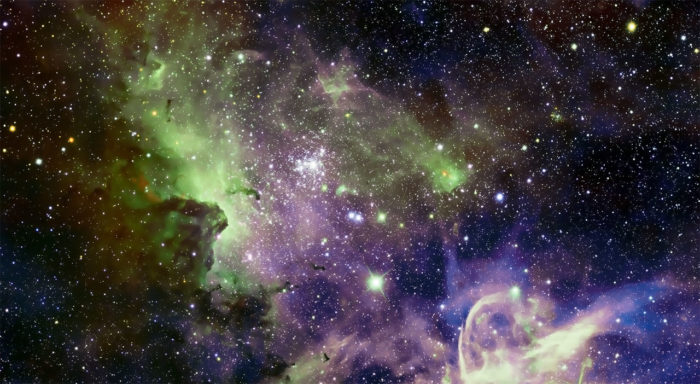
Crazy Facts About Space And The Universe That You Might Not Know
- By
- October 2, 2016
- September 29, 2021
- 8 min read
- 1
- Posted in
- Space, The Universe
If the complete and definitive knowledge of space and the universe were a book that was one-hundred pages long, then what we currently know would arguably take up the first page of the introduction – maybe. And even what we do know we don’t fully understand.
The more we discover about the universe, the more questions seem to crop up. Here are just some of the crazy facts about space that are completely true and proven, if a little hard to get our head around. And who knows? What we know now might be different from what we know in ten or twenty years.
There are numerous planned space missions for example, not least of which, planned missions to Mars which if all goes to plan will see humans setting foot on an alien world for the first time. Combined with the recent news that liquid water is present on the red planet, and it is easy to see why anyone with even the slightest interest in space would be eager the mission goes ahead.

Outer Space.
The largest radio telescope ever produced has also recently gone into action [1] in China which you would expect would yield interesting finds. With the presence of the International Space Station, and the advancements that will take place on the Hubble telescope, not to mention the unmanned probes that are making their way around space, either under their own power or sat upon comets, we are learning new things about the universe all the time.
Contents
Our Friend, The Sun
When we think of the Sun most of us will think of, for sake of argument, a big piece of “coal” that is burning away in space. However if that was the case then the Sun would have burnt out only thousands of years after it began its life. And that is before we bring in the fact that oxygen would be needed for it to burn – and of course there is no oxygen in outer space.
The Sun, which is made up of gas is actually best described as a huge nuclear reactor, [2] that although does not have a solid mass of any kind, does have a very definite structure. Magnetic fields caused by the movement of gases cause nuclear reactions within this structure, which essentially gives it a constant energy source – the piece of “coal.”
The Sun also has a three-layered atmosphere that extends for millions of miles that assist in keeping the reactions happening, and so in turn, keeping the Sun “burning.”
Another fascinating fact is that, although we reside here on Earth, we all in fact live in the Sun.
OK, so it would be impossible to actually live on the Sun, but we do live within its atmosphere [3] – the third layer of its atmosphere to be precise, the corona.
The corona extends right the way through the solar system and beyond into the far reaches of space. It is in fact this that provides us here on Earth with our heat, light and weather, and is essential to our survival and to how we live.
That’s not to say that the corona and the space winds and storms it brings with it are not deadly however. The Earth’s thick atmosphere helps protect us from these solar rays and radiation, while allowing the essentials that we need to penetrate our planet – such as heat and warmth.
Should we decide to venture into space for any prolonged amount of time though – and that is something that is only a matter of time – the corona and the lethality it brings with it, is a problem that scientists will have to overcome.
You check out the video below that looks at ten amazing facts about the Sun.
So Mercury Is The Hottest Planet, Right?
Although the closest planet to the Sun, Mercury is a rather toasty 800 degrees Fahrenheit (426 Celsius), the hottest planet is actually its neighbour and ours, Venus, [4] which maintains a stifling 863 degrees Fahrenheit (462 Celsius) surface temperature – enough to melt lead.
While the lack of atmosphere on Mercury allows the heat to escape the planet and produce relative “cool spots” (still clocking in at around 400 degrees Fahrenheit – 204 Celsius), the thick cloudy atmosphere of Venus – made up mostly of carbon dioxide – traps the heat within the planet, acting essentially as a giant, spherical greenhouse. In fact scientists here on Earth, use the conditions on Venus as gauge of sorts to measure our own carbon levels and greenhouse effects on our planet.
The short video below looks at this in a little more detail.
Despite these conditions, in 1981 the Russians did manage to land a probe on the hellish planet – the Venera 13 – which managed to send back several colour pictures of the planet’s surface before it finally succumbed to the heat after a little over two hours.
It is in part from these pictures that the suggestions that Venus once had ample amounts of water [5] – it is often referred to as Earth’s sister planet – but the build-up of the thick carbon atmosphere which led to the soaring temperatures essentially boiled and evaporated all liquid on the planet.
Pluto – Relegated To Dwarf Status But Still Full Of Intrigue
Although now technically not a planet, in many people’s minds, Pluto is the farthest reach of our solar system, with nothing but the deep reaches of space behind it. However, Pluto marks the beginning of the Kuiper Belt, [6] the end of which is 50 Astronomical Units (AU) away from the Sun – by way of comparison, Pluto (taking into account its orbital path) is an average of 39 AU from the Sun.
1 Astronomical Unit – which is the distance from earth to the Sun – is around 150,000,000 km. Times that by 50 and you will be left with a lot of zeros.
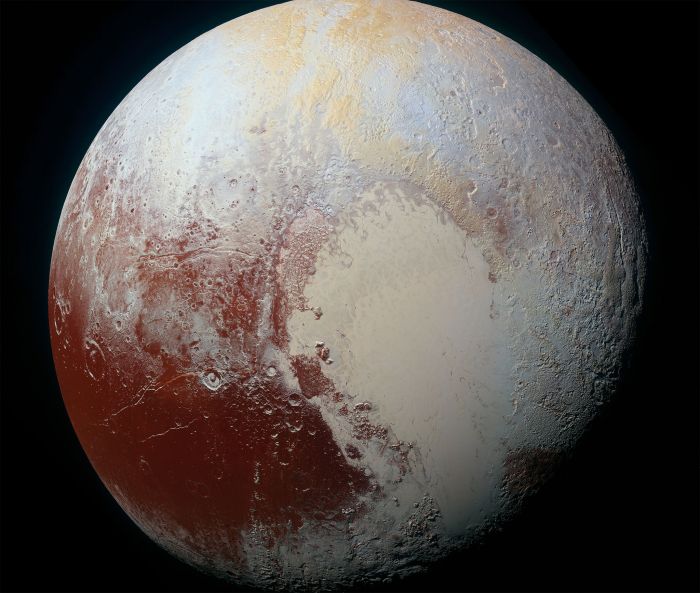
Image showing Pluto and the surface. Source: Wikipedia.
Our solar system doesn’t end there however. The recently discovered dwarf planet, Sedna, is generally regarded as the furthest observable planet in our solar system. Sedna’s orbit takes it from being 76 AU to the Sun at its closest point during its orbit and as far as 960 AU away at its furthest distance.
When you look at Pluto against the size of the United States, it is easy to see why it lost its former planet status.
NASA recently released information and to scale pictures that showed how Pluto and its biggest moon, Charon, would easily fit inside America. [7] The information was part of the fruits of the New Horizons fly-by, which allowed scientists to more accurately measure the one time planet. They found that it was less than 20% the size of Earth, at 1472 miles wide – approximately half the width of the United States from coast to coast. This would also make Pluto slightly smaller than our own moon.
Although no longer a planet, Pluto is now recognised officially as the largest dwarf planet in our solar system.
Gas Giants And Their Moons
We are all familiar with the famous rings of Saturn, however Jupiter, Neptune and Uranus also have rings around them, [8] although theirs are much fainter and not as easily visible as Saturn’s. One thing that all four planets do have in common though is that they are all “gas giants” – huge celestial bodies made up mostly of gases – as opposed to planets such as Earth which are terrestrial planets which have a solid surface.
These planetary rings are generally made up of a combination of dust particles and small (relatively speaking) rocks – locked in a tight, fast orbit around their hosts.
While Saturn’s rings are easiest to observe, developments in technology are making it easier for astronomers on Earth to view and record the lesser known rings of the other three planets. Space missions such as Cassini and the Voyager missions have also assisted in these rings being discovered.
Of course, Saturn is of interest as much for one of its moons as its own mass.
When the Voyager explored Titan in 1980 as part of its fly-by into the deep stretches of space, scientists were shocked to discover that the pictures they sent back were of nothing more than what appeared to be “smog.” Although this meant that observers could not get a clear look at the surface of Saturn’s largest moon, it did suggest something perhaps more important – that Titan had an atmosphere. Not only does this make it the only moon in the known solar system to have an atmosphere, further study revealed it to be very similar to our own here on Earth.

The Gas Giants.
While it might be tempting to think that Mars would have an atmosphere similar to ours, and research suggests one day it indeed did, our red neighbour has a much thinner Carbon dioxide containing atmosphere that offers little if any protection from the Sun’s radiation.
Titan however has an atmosphere made up of mostly nitrogen – our own here on Earth consists of 80% nitrogen.
The presence of other compounds and substances on Titan, in particular methane, has scientists intrigued as to whether methane based life [9] might be found there. And if humans were looking to inhabit another celestial body in our solar system, Titan is the “least hostile” to humans. Although it doesn’t appear to have liquid water there, the atmosphere would certainly make terraforming at least theoretically possible.
What is interesting about Titan is that despite being a similar size and made of almost the same material to Jupiter’s moons, none of them have even a trace of an atmosphere, leaving scientists and researchers still unclear as to exactly why Titan does.
The video below looks at the Titan enigma a little more closely.
The Mysteries Of The Stars
Although when we view stars from here on Earth they appear to twinkle (hence the nursery rhyme) they don’t actually do this. If you were to view them from outer space, or from any planet or moon that doesn’t have an atmosphere, they would simply appear as steady light.
It is the Earth’s atmosphere that makes them twinkle to us, [10] which the starlight has to penetrate and pass through before it reaches our eye. Because our atmosphere is turbulent as well as comprising multiple different layers, the light is constantly changing direction several times a second as opposed to entering straight into our eye. This gives the light from the star a “twinkling” or “sparkling” affect.
This is one way to be able to tell a planet that you can see with the naked eye (such as Mercury, Venus, Mars, Jupiter or Saturn) apart from stars. Because the planets are all much closer to Earth, the bending of light averages out for the human eye as it hasn’t travelled as far – so they have a more solid appearance. This is the same for our closest celestial body, the Moon, but on a much larger scale.
Black Holes (But Not Like In The Movies)
Perhaps one of the great mysteries of space, and certainly one that makes regular appearances in all manner of space-based sci-fi flicks, is black holes.
Despite what the movies have told us for years Black Holes do not suck anything into them [11] – at least not how you might imagine. A common comparison made by many experts is to not think of a black hole as a “cosmic vacuum cleaner” that will pull you in from a great distance, and more along the lines of how gravity would work if you were to fall into a very deep hole right here on Earth.
For a black hole to “capture” something in its gravitational pull, the object has to be very close to it – generally things captured will be things that are heading to the centre of it of its own accord and course.
If a black hole existed in our solar system where our sun currently is, none of the planets would be “sucked into it” – they would in fact remain in the very same orbit. A planet the size of Earth would have to be ten miles away from it to become ensnared in its grip – and in cosmic terms, ten miles is practically right on top of it.
For some further viewing check out the video below that looks at fifty mind-bending facts about space.
References
| ↑1 | Biggest radio telescope on Earth ready to receive alien signals, Emily Benson, New Scientist, September 26th, 2016 https://www.newscientist.com/article/2107075-biggest-radio-telescope-on-earth-ready-to-receive-alien-signals/ |
|---|---|
| ↑2 | How the Sun Works, Julie Layton and Craig Freudenrich, How Stuff Works https://science.howstuffworks.com/sun.htm |
| ↑3 | Living with a Star, NASA, August 19th, 2008 https://science.nasa.gov/science-news/science-at-nasa/2008/19aug_lws/ |
| ↑4 | What is the hottest planet in the solar system?, Planets For Kids https://www.planetsforkids.org/hottest-planet-in-the-solar-system.html |
| ↑5 | Why is Venus the hottest planet even though Mercury is closer to the sun? PhysLink https://www.physlink.com/Education/AskExperts/ae425.cfm |
| ↑6 | Kuiper Belt, NASA https://solarsystem.nasa.gov/solar-system/kuiper-belt/overview/ |
| ↑7 | Pluto just got BIGGER but with its biggest moon would still fit inside USA, Jon Austin, The Express, July 2016, 2015 https://www.express.co.uk/news/nature/591564/PICTURED-Remarkable-image-shows-how-dwarf-planet-pluto-and-biggest-moon-would-fit-in-USA |
| ↑8 | Which Planets Have Rings?, Matt Williams, Universe Today, February 5th, 2015 https://www.universetoday.com/77109/which-planets-have-rings/ |
| ↑9 | How Humans Could Live on Saturn’s Moon Titan (Infographic), Karl Tate, Space, March 12th, 2015 https://www.space.com/28788-living-on-titan-saturn-explained-infographic.html |
| ↑10 | Why do stars twinkle?, John A Graham, Scientific American, October 24th, 2005 https://www.scientificamerican.com/article/why-do-stars-twinkle/ |
| ↑11 | The Latest Science From Hubble, NASA HubbleSite https://hubblesite.org/science |
Fact Checking/Disclaimer
The stories, accounts, and discussions in this article may go against currently accepted science and common beliefs. The details included in the article are based on the reports, accounts and documentation available as provided by witnesses and publications - sources/references are published above.
We do not aim to prove nor disprove any of the theories, cases, or reports. You should read this article with an open mind and come to a conclusion yourself. Our motto always is, "you make up your own mind". Read more about how we fact-check content here.
Copyright & Republishing Policy
The entire article and the contents within are published by, wholly-owned and copyright of UFO Insight. The author does not own the rights to this content.
You may republish short quotes from this article with a reference back to the original UFO Insight article here as the source. You may not republish the article in its entirety.
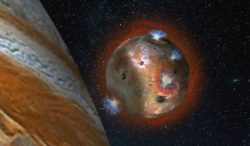

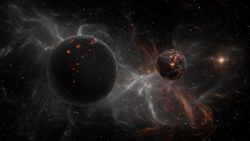

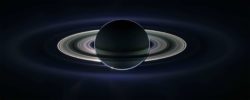
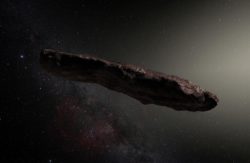
1 Comment
UFO Insight does not take responsibility for the content of the comments below. We take care of filtering profanity as much as we can. The opinions and discussion in the comments below are not the views of UFO Insight, they are the views of the individual posting the comment.
Newest comments appear first, oldest at the bottom. Post a new comment!
This article claims these are FACTS that have been proven. By who? NASA and their astroNOTS? Not a single person has been to any other planet so scientist or not, its impossible to know FACTS. its either speculation or lies. NOTHING NASA says should be believed including their computer generated pics and video!